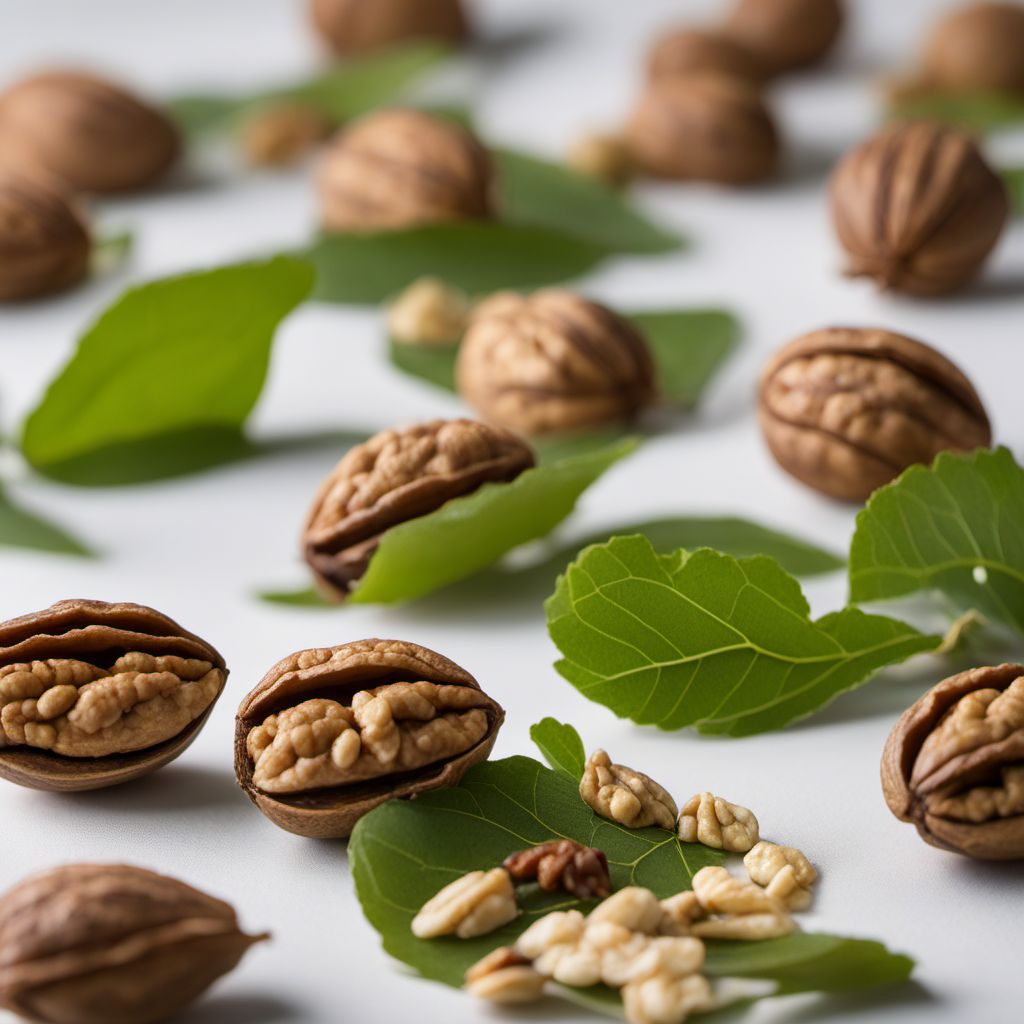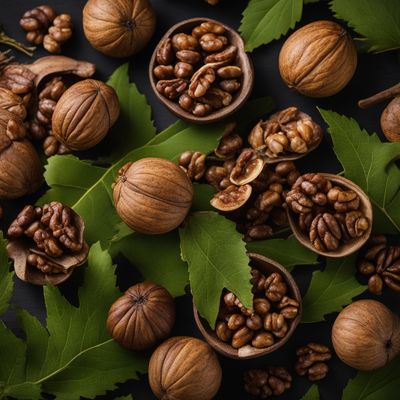
Ingredient
Common walnut infusion leaves
"Nature's Nutty Elixir: Unveiling the Power of Common Walnut Infusion Leaves"
Common walnut infusion leaves are derived from the leaves of the Juglans regia tree, commonly known as the English walnut tree. These leaves have a vibrant green color and a delicate texture. When infused in liquids, they release a distinct nutty flavor and aroma, reminiscent of the rich taste of walnuts. The leaves are often used to infuse oils, vinegars, and spirits, adding a subtle yet delightful nuttiness to dishes and beverages. They can also be used as a garnish or incorporated into salads for an added layer of flavor and visual appeal.
Origins and history
The English walnut tree, native to the regions of Central Asia and the Mediterranean, has a long history dating back thousands of years. The leaves of this tree have been used in traditional medicine and culinary practices in various cultures. In ancient times, the infusion of walnut leaves was believed to have medicinal properties and was used to treat ailments such as skin conditions and digestive issues. Over time, the use of walnut infusion leaves spread to different parts of the world, and they became a staple ingredient in many cuisines.
Nutritional information
Common walnut infusion leaves are a good source of antioxidants, vitamins, and minerals. They contain essential nutrients such as vitamin C, vitamin A, iron, and calcium. However, since the leaves are primarily used for infusion purposes and not consumed directly, their nutritional content may vary depending on the method and duration of infusion.
Allergens
Common walnut infusion leaves may cause allergic reactions in individuals with nut allergies. It is important to exercise caution and consult with a healthcare professional if you have any known allergies.
How to select
When selecting common walnut infusion leaves, look for fresh, vibrant green leaves that are free from blemishes or signs of wilting. Avoid leaves that appear yellowed or have a strong odor, as these may indicate spoilage or poor quality. Opt for leaves that are organically grown to ensure they are free from pesticides or other harmful chemicals.
Storage recommendations
To maintain the freshness and quality of common walnut infusion leaves, store them in an airtight container in a cool, dry place away from direct sunlight. Properly stored leaves can retain their flavor and aroma for several months.
How to produce
Common walnut infusion leaves can be produced by harvesting fresh leaves from a mature English walnut tree. It is recommended to gather the leaves during the spring or early summer when they are at their peak freshness. Once harvested, the leaves can be air-dried or gently heated to remove excess moisture before being used for infusion purposes.
Preparation tips
To infuse common walnut flavor into oils, vinegars, or spirits, simply add a handful of fresh or dried walnut infusion leaves to the desired liquid and let it steep for a period of time, typically ranging from a few days to a few weeks. The longer the infusion, the stronger the flavor. Experiment with different ratios and infusion times to achieve the desired intensity of nuttiness. Additionally, common walnut infusion leaves can be used as a garnish or added to salads for a touch of visual appeal and subtle nutty flavor.
Culinary uses
Common walnut infusion leaves are commonly used to infuse oils, vinegars, and spirits, adding a delightful nutty flavor to dressings, marinades, and cocktails. They can also be used as a garnish or incorporated into salads for an added layer of flavor and visual appeal.
Availability
Common walnut infusion leaves are commonly available in regions where English walnut trees are cultivated, including parts of Europe, North America, and Asia.
